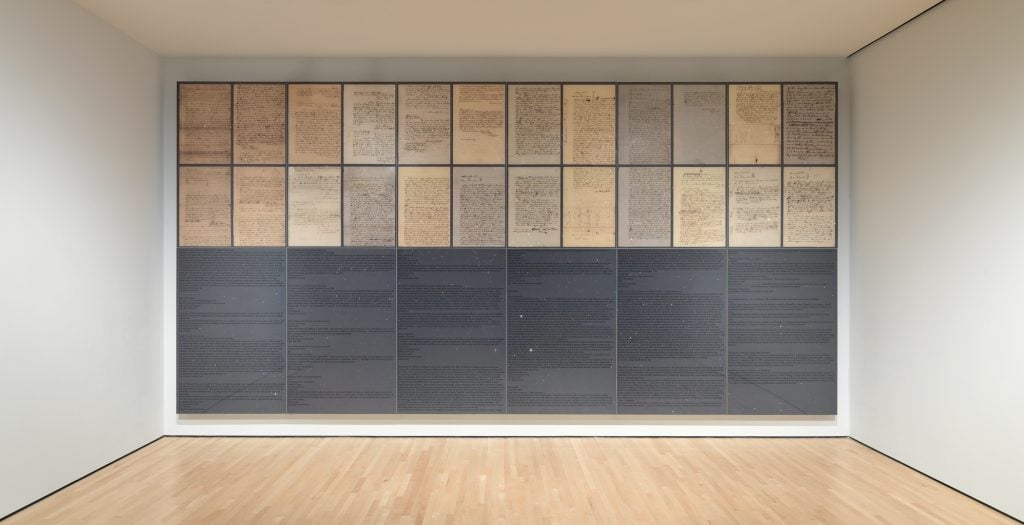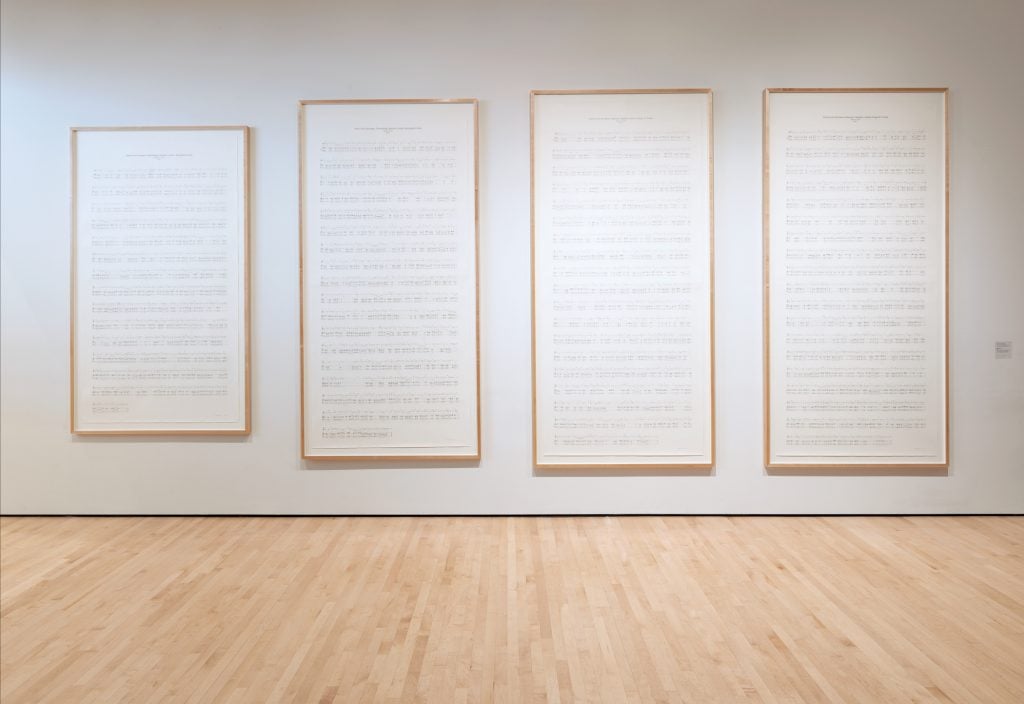Museums & Institutions
The Permanent Collection: Charles Gaines Ponders the Weight of History
SFMoMA contemporary art curator Eungie Joo discusses the poignant artworks.

SFMoMA contemporary art curator Eungie Joo discusses the poignant artworks.

Zack Hatfield

My work as a curator was deeply influenced by Charles Gaines’s writing and art, since I stumbled across his essay in The Theater of Refusal: Black Art and Mainstream Criticism in 1994. In 2018, I commissioned Charles to produce a New Work exhibition featuring his “Manifestos” series. He ultimately created two related works that are now in SFMOMA’s collection, Manifestos 4 and Sky Box II (both, 2020). Unfortunately, due to COVID-19 restrictions, we never had an opening celebration when the works were first shown, in March 2021.
In previous Manifestos works, Charles used revolutionary political text, such as the Black Panther Party’s Ten-Point Program and the “Declaration of the Rights of Woman and the Female Citizen.” Here, he wanted to activate a different kind of political text: a court decision. Manifestos 4 came out of research into the 1857 Dred Scott decision, which ruled that Black people were not US citizens.
Although court decisions might be considered objective texts, as interpretations of the law, they are also political texts. Charles has created a system in which the letters of the text are replaced with musical notes, rests, or pauses, eventually arriving at an arbitrary composition. Ultimately arranged for a woodwind sextet, the non-melodic composition has moments where it seems to be full of overwhelming affect and emotion. What relationship do these random letters have to the selection of these individual notes? This really makes you question meaning altogether.

Charles Gaines, Manifestos 4 (2020); San Francisco Museum of Modern Art. © Charles Gaines;. Photo: Katherine du Tiel.
When Charles began making this work, many people hadn’t heard of the Dred Scott decision. But by the synchronicity of the universe and evil tricks of fate, these works coincided with the murder of George Floyd in Minneapolis and the emergence of the Black Lives Matter movement. The case started being cited in a way it hadn’t been for a long time.
Sky Box II uses material from the Dred Scott archive in St. Louis. On the top are handwritten documents; the bottom panels show a transcription. As you read these texts, consumed in legalese and posturing, suddenly the words disappear and you’re surrounded by the cosmos. This experience of hanging onto the meaning of every word—the legal precedent, this minutia of language—evaporates, and letters have no meaning. You find yourself in a universe that’s immediate, geologic, and impossible to grasp.
—Eungie Joo, curator of contemporary art at SFMOMA, as told to Zack Hatfield
Manifestos 4 and Sky Box II will be included in the exhibition “Seeing Through Stone” at the San Jose Museum of Art and the Institute of Arts and Sciences at University of California at Santa Cruz, through January 5, 2025, as part of the “Visualizing Abolition” series.
What artwork hangs across from Mona Lisa? What lies downstairs from Van Gogh’s Sunflowers? In “The Permanent Collection,” we journey to museums around the globe, illuminating hidden gems and sharing stories behind artworks that often lie beyond the spotlight.